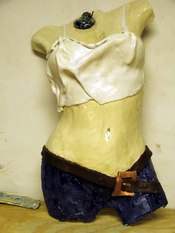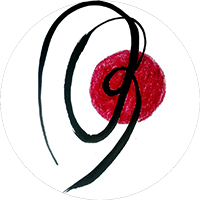 Beach B, hand sculpted and slab built clay wall sculpture by Tammy Vitale
Beach B, hand sculpted and slab built clay wall sculpture by Tammy Vitale
Dear regulars, if you like my work, please hop over to http://artdc.org/gallery/thumbnails.php?album=134 and vote for the 3 pieces I have up.
This may take signing in at artdc.org. Simple, they won’t bother you. If you have to go to the main page, the gallery is in the right column. You are looking for ArtOMatic, 3D to get to the above page. Probably if you have to sing in, once you’re in you can then just go to this page, scroll down, click on the photo and vote for me!
ArtOMatic is this wild and wooly anyone who wants in art, music, theater, poetry, whatever show that has happened every two years. This was the year and it didn’t happen (usually they negotiate a building that is going to be torn down or renovated, we go in for a month, and then we’re out). So they are working with ArtDC to have an on-line show with the potential for a DC gallery to ask to show your work. Long shot, but hey.
Send me an email (see left side bar) if you do, so I have a count. Thanks!
Meanwhile, here ‘s an excerpt form Texas Society of Sculptors Newsletter on artist statements and artist bios.
Art Business Tips: Writing the Artist’s Statement, Bio, and Resumé
By Kelly Borsheim 30 November 2003
Artist’s Statement: Technically speaking, the "artist’s statement" is anything the artist wishes to say to his or her audience. But that is not terribly helpful, is it? The best artist’s statements I have read have been in easy-to-understand language, almost conversational. Unlike speaking to a group, writing gives you the advantage to speak directly to one individual at a time, since each person reads at his own pace and reading is a personal experience. So write as though you are talking to one person.
Artist’s Bio: Your biography is the hint at the story of your life, not so much your art, but YOU. Where and when were you born, who are your parents (were they artists?), where and how did you grow up? What led you to an artistic path? Some artists do not want to share personal information with the public. How much you do is YOUR CHOICE! So what is the purpose of the artist’s bio? It is to help the artist make a human connection to potential buyers. People connect with one another in many ways, but sometimes it is simply, "Oh, you are from St. Paul? My parents grew up there!" or "You are one of 6 kids? Me, too!" or "You grew up as a military brat? Well, I have traveled a lot, too." Your bio need not to be long; bonus points for relevancy to your art career.
Artist’s Resumé: Think of your resumé as your art job history. This includes any education that you have, especially as it pertains to your art (or general intelligence); your art exhibits; TV, radio, or newspaper interviews; professional art jobs, commissions, or projects; membership in art organizations; or charities you have donated art to; and important (museum, corporate or private) collections your work is in. Again, do not be intimidated if you do not have a long list of art-related accomplishments. Everyone starts somewhere. Most viewers just want an idea of where you are in your artistic path. And those with long lists need not list EVERY event, just highlight the important ones.


